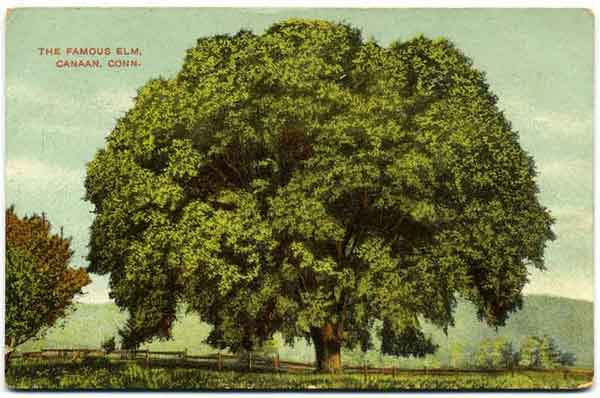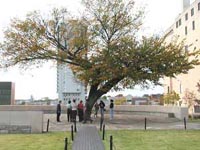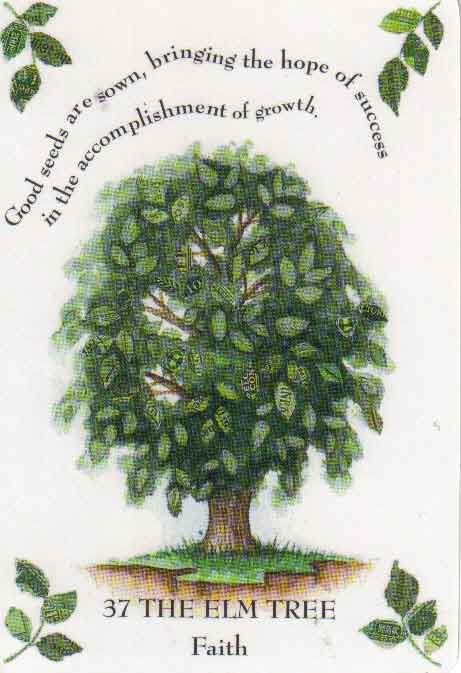|
Elm
Ulmus Campestris
Elm is the Arbitrator that listens without judgment
|
|
|
Planet: Mercury, Saturn Element: Water Symbolism: Communication and Relationships Color: Turquoise Birds: Lapwing, Ruffled Grouse Deity: Orpheus, Odin, Hoenin, Lodr Folk Names: Elven, English Elm, European Elm
Medicinal properties: infusions from the inner root bark to treat colds, coughs, diarrhea, internal bleeding, and fever. Apply to external wounds, or drink to ease menstrual problems.
Magickal properties: The tree essence energizes the mind and balances the heart. It attracts love, protects, and aids in sharpening psychic powers. The wood of the elm was used for coffins in England, and you could find it in graveyards in ancient Greece. It was found in the underworld and at the crossroads leading to the faery world. Elm is very popular with the Elves. Elm is now used to protect against lightening strikes. Carry Elm to attract love. |
|
|
Survivor Tree (American
Elm)
At the Oklahoma City National Memorial, the site of the 1995 bombing of the Murrah Federal Building, stands the Survivor Tree. The tree stands guard over a native stone plaza and its courtyard of 168 empty chairs. The fact that the tree survived the bomb blast that killed so many transformed it from a mere tree to a talisman for the comfort of all who survived. That a tree should take on such symbolism in the aftermath of a tragedy is hardly surprising. Mankind has long placed significance on its venerable old trees, and the greater the age or the more momentous the event surrounding them, the more important they become. The Survivor tree is an American elm, Ulmus americana. While the species is capable of attaining a height and spread of more than 100 feet, this tree is more modest in its stature with dimensions of about 40 feet. Photos taken in the 1920's when the property was the back yard of a family home indicate the tree is about 100 years old. The tree's low-forked trunk is tilted at an odd angle and, were the circumstance different, it would have hardly attracted visitors' notice. But in the aftermath of the blast, the off-balanced yet well-rooted stature of the tree make it a perfect symbol for survival. It seems to proclaim to all who enter the hallowed site and will pause a moment to listen that the senseless act of destruction perpetrated by the few will not be the final word. The very fibers of its bole seem to radiate hope for the future just as a lighthouse sends its light into the dark night. Chronicling the story of our nation's historic trees has never been a very organized affair, yet individuals with a sense of history and biology occasionally come forth with compilations of historic trees. To my knowledge, the first such attempt was during the Civil War by Harper's New Monthly Magazine, which described many of the significant trees from the Colonial era. A modern account of historic trees was prepared during the height of the green movement when the editors of Outdoor Life published Trees of America in 1973. Because trees are transient and events of importance are constantly changing, an updated version is sorely needed for those of us interested in this small slice of Americana. During the last decade the folks at the National Arbor Day Foundation have been selling seedlings or grafts of historic trees. While these trees may not have superior horticultural characteristics, their historic significance is great. Every plant in a landscape has a story to tell and these historic trees can serve as a touchstone to our past. I don't know if there have been efforts to propagate the Survivor Elm. While there may be considerable interest in doing so, it is probably not the best idea. American elms are highly susceptible to Dutch elm disease and the fact that this tree has survived probably has more to the fact it is located at the western extent of the trees range than with any inherent resistance to the disease. Several disease resistant American elms are now being grown by wholesale nurserymen so gardeners interested in growing a venerable elm for their landscape would be better advised to seek out one of these for planting. |
|
|
by Gillian Kemp
"Because of its rich foliage and sap, the Elm is sacred to Saturn, Roman god of agriculture. Representing fertility, it foretells that your wish will meet with success. Its other meaning is their need to give way and let nature run its course, to sacrifice what you have for what could be. Elm wood is flexible and durable, and does not rot when wet. You probably know in your heart that your wish will be granted. A hopeful sign is that Elm twigs are used as divining rods. The Elm tree stands at the entrance to the underworld as a living connection between the living and the dead. What comes to you is blessed by heaven. It may be that all you need do is wait and have faith in nature."
|
|
|
Pray Peace
|
|
|
|
|



